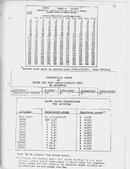Valeriy_Kulaha
Contributor
I do not advertise my plastic product. All physicists know that Boyle's depth gauge is a reference one, since it has no transmission parts, and therefore no possible sources of error. It's like a mercury thermometer or a mercury barometer. These are direct-reading devices.I am an old diver (40+ years) and most of my hair is gone not gray. Now we are quoting legal directed disclaimers to justify your plastic disk. People have answered the question, you’re just not seeing it. The chance of a Perdix failing is extremely low, the chance of two computers failing at the same time is so remote that it’s not ever worth mentioning. I see you pushing this on other sites but you just can’t take the hint. While you may sell off a couple of them, you are trying to create a solution for a problem that doesn’t exist. Again, if there was still a need for this, they would still be commercially available. If, and that is a remote “if” I have two computers are giving me two different depth readings, you go with the computer that gives you the deeper reading, no big deal.
Manufacturers do not do a lot of things that are inexpensive - it is more profitable to sell an expensive product. But in many countries of the world, the cost of one Sherwater's computer is equal to half a year, or even more, the income of a worker. Well, why do millions of schnorcheler need a computer?
And another question - when was the last time you checked your computers in a service center?





